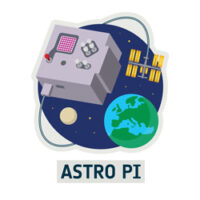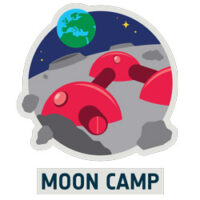Back to School with ESA Inspire article
Motivate and engage your students with the interdisciplinary school projects run by the European Space Agency (ESA).

Space sparks students’ natural curiosity about the world while intersecting with many school topics. Motivate and engage your students with the interdisciplinary school projects run by the European Space Agency (ESA). These comprise a set of classroom resources and other inspiring supporting materials. Your students can learn about Earth’s environment, train like an astronaut, design a Moon base, develop a “micro-satellite” or program a computer onboard the ISS.
Choose your favourite project and teach with space! Registrations will open from 13 to 17 September.
The projects
The European Astro Pi Challenge
Level: up to 19 years old

Learn to code while exploring space! You can conduct scientific investigations in space by writing computer programs that run on Raspberry Pi computers aboard the International Space Station. Two missions are available for beginners and more experienced coders. This project is run in collaboration with the Raspberry Pi Foundation.
Climate Detectives
Level: 8 to 15 years old

Join the ESA Climate Detectives community and help ESA protect Earth’s climate. Identify a local climate problem, investigate it by using real satellite images or your own ground measurements, and propose actions to help reduce or monitor the problem. We can all make a difference!
Moon Camp Challenge
Level: 6 to 19 years old

Accept the challenge to 3D design your own Moon base for astronauts of the future. Choose the level that best fits your team: Discovery for beginners, Explorers for intermediate teams or Pioneers for advanced teams. Moon Camp is a collaboration between ESA and Airbus Foundation.
CanSat
Level: 11 to 19 years old

Imagine, build, test and launch your very own mini satellite fitting the size of a soda can. Foster your technology and programming skills by taking up this challenge. Your team must plan a scientific mission to be performed during the launch and descent to Earth. Are you a beginner? Don’t worry! Start your mission by experimenting with the new online simplified beginners’ category, CanSat Starter, launching in November.
Mission X: Train like an astronaut
Level: 8 to 12 years old

It’s time to get up, move your body, and train like an astronaut! Complete physical exercises and scientific investigations developed by scientists and astronaut trainers. Earn points to help mascots Luna and Leo walk to the Moon. Mission X is a collaboration between ESA and the UK Space Agency, facilitated by the ESERO network.
Practical details
The projects have different formats but all offer flexibility in terms of classroom implementation. With beginner and advanced categories, the complexity is adaptable.
Participation in these projects is free and open to school students in all 22 ESA Member States, as well as Lithuania, Latvia, Slovenia, Canada, and Malta. The Moon Camp Challenge and Mission X are open worldwide. For more information about the eligibility criteria, please consult the guidelines.
The ESA school projects have different timelines and registration deadlines. Click to enlarge the infographic below for more details.

©ESA
For more information about the ESA Education school projects, visit the project websites or the ESA Education website: https://www.esa.int/Education/Teachers_Corner/
Resources
- Devise a plan for growing plants on the Moon with your classroom: Hardie K, Cardoso C (2020) Astrofarmer: how to grow plants in space. Science in School 49:33–37.
- Classroom activities to demonstrate some of the key principles of space science: Ahlgren O (2019) Rocket science made easy. Science in School 47:34–37.
- Can your students save the Earth from an asteroid collision? Follows M (2018) Saving the Earth Hollywood-style. Science in School 43:46–50.
- Read about the search for alien life: Tatalović M (2020) Alien life and where to find it. Science in School 50.
- Find out what the stars are made of: Ribeiro CI, Ahlgren O (2016) What are stars made of? Science in School 37:34–39.
- Read about a planet where it rains iron: (2021) ESO telescope observes exoplanet where it rains iron. Science in School 51.





